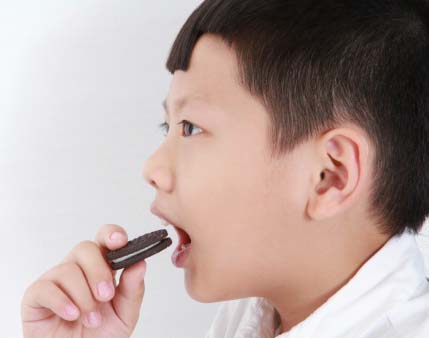Learn
Figurative Language
Authors use figurative language words or phrases that do not mean what they seem to mean to help readers imagine the events and emotions described in a work of literature.
What are your five senses? Match each sense to the correct picture.
Senses:
- sight
- sound
- smell
- touch
- taste
Pictures:
| The Five Senses | ||||

|

|

|

|

|
| touch | sight | sound | smell | taste |
By using imagery, authors can create a multitude of figures of speech Types of figurative language that are not literal and mean something more than they seem to say. (like metaphor Comparing two unlike objects. Example: Spongebob's life is a train wreck. , simile A comparison of two unlike objects using the connecting words 'like' or 'as.' Example: Life is like a box of chocolates. , and personification Inanimate objects are given human characteristics. Example: The sky smiled a rainbow of color. to help the readers see the world that they are describing.
Examples
Complete the sentences using words that appeal to your senses.
1. Laughter tastes like __________________.
2. Love looks like ____________________.
3. Marriage sounds like __________________.
The comparison of two unlike things using the words like or as is called a simile. If you do not use these words, it is called a metaphor. Personification is when the writer gives inanimate objects human characteristics.
Literal vs. Figurative
Have you ever heard one of your friends say that something was literally the best thing ever? Chances are that he or she was not using the word correctly.
Something that is literal means that it is true. Read the sentence below.
Shakespeare was a writer.
That sentence can be taken for its literal meaning. Was Shakespeare a writer? Yes!
However, when something is figurative, you must figure out the intended meaning. It is departing form the literal use of the word. Read the sentence below.
Shakespeare's words hovered onto the page just as they do on the stage.
Did Shakespeare's words fly? No! This sentence isn't literal.
Oreo Cookie Blues
Read and listen to the lyrics of a song called "Oreo Cookie Blues."

A boy eating an Oreo cookie.
Look at the lyrics from the song.
Chocolate on my fingers, icing on my lips
Which senses are being appealed to in this line? See answer. The imagery is appealing to sight and touch.
Read the next lines from the song.
I got them Oreo crème sandwich
Chocolate covered crème
filled cookie blues.
To which senses are these lines appealing? See answer. taste
This is a metaphor comparing cookies to blues.
Review
A simile compares two unlike things using the connecting words like or as.
Examples:
Life is like a box of chocolates.
The girl is as sweet as candy.
A metaphor compares two unlike things without using the connecting words like or as.
Examples:
Your face is green with envy.
Her heart is made of stone.
A personification gives human traits to inanimate objects or ideas.
Examples:
The sunlight danced through the clouds.
The thunder roared with anger.